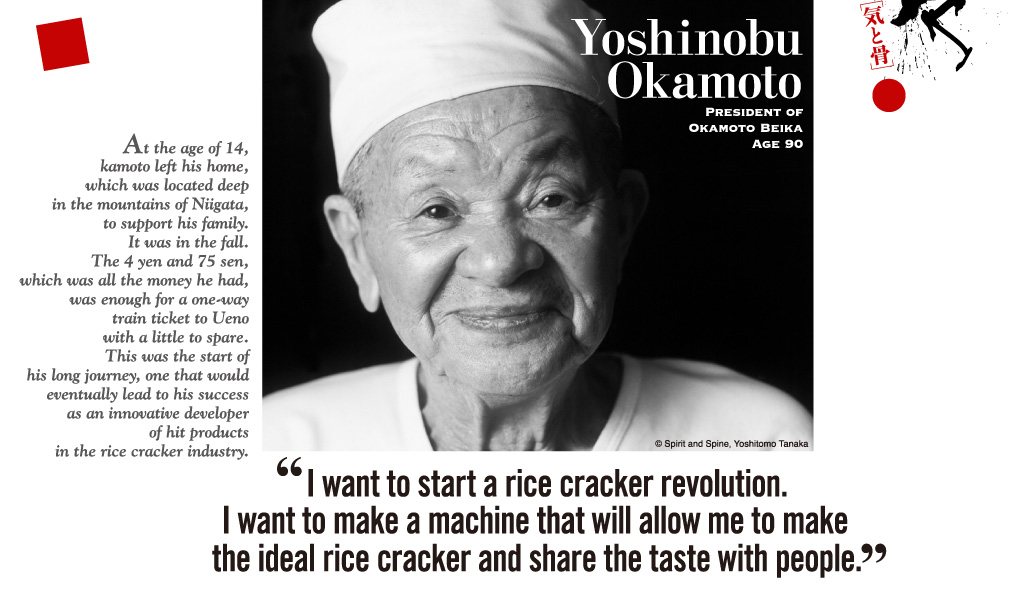There were no higher elementary schools in his hometown, which was located in a heavy snowfall area so the school he attended was in neighboring Nagano Prefecture. It was a two hour commute one way. He put up with terrible bullying against outsiders. Okamoto, the eldest of eleven siblings, moved to Tokyo and worked as an apprentice at a rice cracker shop. He sent all his earnings back home.
While working at his wife's parents' home after World War II, Okamoto came up with an idea for a new product which he hoped would one day amaze people all over Tokyo. Before he knew it, he was deep-frying the batter at his home. The deep-fried rice crackers; a result of a spontaneous idea, were a huge hit. Okamoto opened his own store and made a new rice cooker from British steel. His rice crackers with an assortment of seven flavors, which he started preparing before dawn, became popular as a rice cracker that everyone in the family could enjoy. It was his signature product for many years. Okamoto continued to develop new products such as the cheese sandwich cracker. He stuck with his easygoing approach of not obtaining any patents but accepting training requests even from major companies.
His wife, Kayoko, was the caretaker of the shop as well as the home. He reminisces about her, saying that she was broad-minded. Their main source of revenue was selling to department stores through a wholesaler, but the wholesaler went out of business. Fortunately, they avoided a chain bankruptcy because they had paid off their debts just before they went out of business, which his wife had suggested they do. "We had eight children grow up here and leave the nest," she reasoned. "It's one thing to pay a visit to express our gratitude; but to collect money? That's no way to do things." It has been seven years since Okamoto's wife passed away. Last year, Okamoto's machine was destroyed in a fire. This tenacious skilled worker faces the furnace every day of the year and aims to start a revolution.







































































































